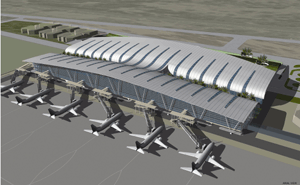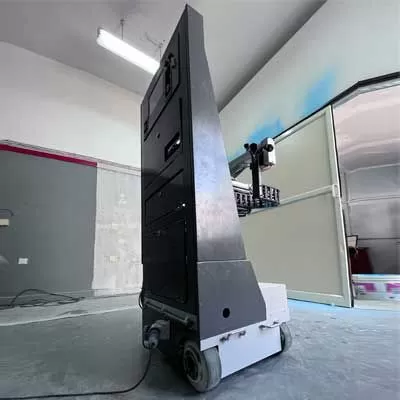- Home
- Technology
- The BIM Boost

The BIM Boost
With a new government firmly in the driver´s seat, India needs to be on top gear to pursue the three key elements of economic growth, industrialisation and urbanisation. While over 70 per cent of the built environment assets required in the country are yet to be built, this sector seems to be beleaguered by project delays, cost overruns, quality issues and other inefficiencies in the delivery process. In this scenario, software related to the construction value chain in particular, building information modelling (BIM) can be a game changer.
Present status
Also known as virtual design and construction (VDC), BIM can significantly improve operational efficiencies, leading to faster project completion and cost savings. So, where do we stand at present in BIM? According to a pan-India study conducted last month by the Royal Institution of Chartered Surveyors (RICS) School of Built Environment, Amity University, about 22 per cent of respondents have started using BIM in the past two to three years. Although this figure is low compared to regions like the US, the UK and Europe, the growing awareness is heartening.
According to Dr Anil Sawhney, Associate Dean, RICS School of Built Environment, and a contributor to the report, ´BIM adoption will be crucial for real-estate and infrastructure development in India. Increased competition, pressure on margins and stiffer regulatory environment require that we embrace BIM as it extends the capacity of the project team to start thinking about time, cost, quality, sustainability and other pragmatic parameters in the early stages of a project. This has been demonstrated in other parts of the world. For example, the UK has demonstrated a reduction of 20 per cent in construction costs by use of modern software tools and related work practices.´ Sunil MK, Head-AEC (Architecture, Engineering and Construction), Autodesk (India & SAARC), concurs, saying, ´Leveraging technology has become essential in how we plan, design, build and operate, in response to growing demand for higher performing and energy-efficient infrastructure and buildings, rising costs, greater global competition, expectations for sustainability, and an increasing focus among owners to maximise the return on their investment. The adoption of 3D design technologies like BIM to improve collaboration, efficiency and performance in planning and design, during construction, in post-build savings and for ongoing operational management has become critical.´
Sharing a user experience,
Satish Pendse, Group CIO-HCC Group, and President-Highbar Technologies (an HCC Group company), informs us that HCC follows a clear IT roadmap towards an integrated IT architecture. ´We are using various software solutions across our projects to enhance business efficiency and project productivity including SAP ERP, SAP CRM, supplier portal, rebar, employee portals, business intelligence, GIS, vehicle tracking and AutoCAD,´ he says. ´These have added value to the business and projects, resulting in business efficiency and project productivity.´
Latest trends
With growing complexity in Indian construction and infrastructure, BIM penetration is gaining momentum; here, software providers like Tekla intend to lead the charge. Nirmalya Chatterjee, COO and Business Director, Tekla India, says, ´BIM has much more potential to change the whole industry than CAD ever had. CAD was a more efficient way of creating results with pencil and paper. The focus today is on integrating BIM into processes and daily activities.´
For his part, Sunil avers that easy and convenient accessibility to superior construction technology will be a key demand trend for the construction software business in India over the next two to three years. ´The year 2014 will be characterised by continued rapid adoption of BIM technologies to drive productivity,´ he predicts. ´Key trends in 2014 and beyond will include cloud technology enabling the virtual extension of architects´ and engineers´ offices onto the jobsite; mobile devices and BIM workflow-based technologies and practices enhancing collaboration in the field across AEC disciplines; rapid advancements in file-to-fabrication by 2020 resulting in the ability to produce building components via offsite; and onsite digital fabrication becoming the norm.´
To this, JP Rao, Director-Corporate Marketing Strategy (India-Construction), Shapoorji Pallonji & Co, adds, ´Demand trends include software for steel structure construction, integrated software for complex projects involving change in design, quantity and cost, and online and tablet-based applications.´
Adding value to business
Design technology plays an integral part in not just the creation and construction of new buildings but helping stakeholders such as architects, engineers, contractors and owners achieve effective cost control and accurate decision-making. ´BIM is an integrated process enabled by Autodesk Revit that helps the construction sector reduce risk, optimise design, deliver more successful, predictable project outcomes and win new business,´ points out Sunil. ´Large projects of the size of IT parks are beginning to adopt BIM. Some recent projects such as Navi Mumbai Airport Terminal using AutoCAD Civil 3D and Khed City developed by Kalyani Group have leveraged Autodesk Infrastructure Design Suite. Kalyani Group saved 7 per cent of its construction cost by using BIM, which is huge.´
Meanwhile, Chatterjee shares, ´According to some global surveys, generally, the cost savings by implementing the right BIM software would range between 20 per cent and 40 per cent. But this figure is still conservative because many customers have still not leveraged the full benefit of BIM. According to one of our customers, using Tekla Structures software in the Chennai Airport expansion project reduced material wastage by 3.5-4 per cent and increased productivity by over 30 per cent.´
To enhance business efficiency and project productivity, Lalu Varghese, Managing Director, LSS Pvt Ltd-CCS ASIA, advises, ´Cost controllers and project managers do not need to be engaged at the initial or estimation stage of the project but it is essential that there is a comprehensive handover of the estimate data to the project delivery team who will become directly responsible for the commercial viability of the project. Project managers and cost controllers must also provide continual and regular feedback to the estimators of actual productions.´
´We have been using 3D modelling software for preparing construction drawings that provide clash-free design in construction and eliminate rework at site,´ shares Ashok Bhargava, COO-PL Engineering, a Punj Lloyd company. ´This allows meaningful constructability reviews during the design phase, enhances understanding of the construction function and allows more efficient planning of construction activities.´
For Rao, project management software helps in planning and monitoring; and design software helps optimise design time and cost savings. He further adds that redundant work gets eliminated and better coordination is achieved.
New developments
The construction software segment is never far from new actions and novel solutions. The latest software suites are more integrated with cloud services and offer customers the ability to collaborate, simulate, analyse and do much more. For example, the new Autodesk 2015 Design Suites include AutoCAD 2015 (the most advanced version yet) and offer a new standard in design and documentation with a new interface and enhanced productivity tools. Also, these suites are more tightly integrated with Autodesk 360 cloud services than ever before. Sunil adds, ´The 2015 suites for buildings, civil infrastructure, and oil and gas projects offer hundreds of improvements and new capabilities for Autodesk Building Design Suite, Autodesk Infrastructure Design Suite and Autodesk Plant Design Suite. In addition to the Suites enhancements, the Autodesk InfraWorks 360 family now includes enhanced roads and highways capabilities and new features to help civil engineers model and visualise more realistic bridge design concepts.´
On Tekla´s recent offerings, Chatterjee highlights, ´Tekla Structures BIM software provides an accurate, detailed, and data-rich 3D environment that can be configured for and shared by contractors, structural engineers, steel detailers and fabricators, as well as concrete detailers and manufacturers. Besides, Tekla BIMsight is a professional tool for construction project collaboration that can consolidate project information from all stages, allowing participants to identify and solve issues in the design phase before actual construction. By minimising error, construction firms save on unnecessary material, labour costs and achieve significant improvements in productivity and quality.´ However, Varghese has a different sales model. ´We add to our systems rather than release new products,´ he says. ´This is principally because our Candy sales model, for one, is on monthly rentals, so we are not driven by off-the-shelf sales of software like other companies. In terms of individual client use, both Candy and BuildSmart are extremely versatile and powerful and we often find that organisations underutilise the software. So, part of our forward customer interaction is to assist clients in India to realise the full potential benefits to their company through proper use of our products, without buying add-on products.´
Stumbling blocks
The primary obstacles on the growth path of BIM in India are mindset issues and resistance to change. ´Lack of availability of skilled resources and perceived costs are deterring growth,´ says Dr Sawhney. ´Besides, lack of standards and guidelines at the national level are the biggest impediments for the usage of ICT in our sector.´
According to Pendse, the implementation of construction software is a huge task for any infrastructure player. He elaborates, ´The challenges include difficulty in ensuring timely, accurate and complete data, change management in adopting new IT initiatives and lack of push to drive IT as a competitive advantage.´
Towards smart and sustainable solutions That said, it is evident that there are tremendous opportunities to be tapped by construction software in the form of efficiency and productivity improvement solutions that are smart and sustainable. From 3D (width, height and depth) to 4D (time) and 5D (cost), the scope for extending the dimensions of project excellence is virtually limitless û even going up to the ´nth´ dimension. It´s just a matter of application!
(For more case studies on BIM, log on to
www.ConstructionWorld.in/webx)
Case Study: Chennai International Airport Expansion and Modernisation
.................................................................................................................................. Client: Yugasoft
Key challenges: Complex geometry, both in concrete and steel structures, was the main challenge in this project.
Solution: Tekla Structures 3D modelling software
Techno-commercial benefits: Tekla Structures BIM software was beneficial to Yugasoft for early material procurement and optimised material usage, reducing wastage by 4 per cent, apart from saving time and cost as well as benefitting in the fabrication stage.
Client feedback: K Mahadevan, Head, Yugasoft, says, ´I would estimate that using Tekla Structures in the Chennai Airport expansion project reduced material wastage by 3.5-4 per cent and increased productivity by over 30 per cent.´
Industry players are taking a bit cautious approach to BIM adoption.´
- Dr Anil Sawhney, Associate Dean,
RICS School of Built Environment
The opportunity in the construction software market is limitless.´
- Sunil MK, Head-AEC,
Autodesk (India & SAARC)
Case Study: Mumbai Monorail
............................................................................................................................... Client: Larsen & Toubro
Key challenges: As the first-of-its-kind project in India, it proved to be intricate at many levels beginning with its geometric design and its inability to find the appropriate technology to address it. There was a need to reuse information from drawings in the absence of the actual profile from the designer in many cases.
Solution: AutoCAD Civil 3D
Techno-commercial benefits: AutoCAD Civil 3D helped establish India´s first monorail project as a precedent for achieving a level of accuracy of up to 1 mm per m and accomplishing 80 per cent time optimisation in deliverables.
Client feedback: Datta Gupta, Head IES Construction Engineering, L&T Ltd, says, ´Autodesk has allowed us to redefine design processes, spurring innovation, achieving competitive advantage and enhancing overall productivity and profitability.´
The implementation of construction software is a huge task for any infrastructure player.
- Satish Pendse, Group CIO-HCC Group, and President-Highbar Technologies
BIM has much more potential to change the industry than CAD ever had.´
- Nirmalya Chatterjee,
COO and Business Director, Tekla India
Case Study: Standby LNG jetty in Dahej, Gujarat
............................................................ Client: Afcons Infrastructure
Key challenges: Software was required to boost the tendering system (not just calculate tender cost) and give a near accurate analysis of tenders.
Solution: CCS product (Candy)
Techno-commercial benefits: The front end of the software looks like Excel and thus makes itself familiar almost immediately to any new user. Also, the bill of quantities comes in Excel format. Candy software facilitates direct upload of the Excel format into the system, so estimation is fast and accurate.
Client feedback: Sandeep Desai, Executive Vice President, IT & Information Process Group, Afcons Infrastructure, says, ´Afcons took a leap of faith a couple of years ago when it decided to integrate the CCS Candy software into its system. Our decision to choose Candy from a pool of software was vindicated as it exceeded our expectations in terms of performance.´
We add to our systems rather than release new products.´
Lalu Varghese, Managing Director,
LSS Pvt Ltd-CCS ASIA
Coordination among
disciplines is critical to have error free design.´
Ashok Bhargava, COO, PL Engineering
To share your views on the construction software sector, write in at feedback@ASAPPmedia.com
Given the high stakes of infrastructure development in India, software related to the construction value chain can make the crucial difference to project excellence, writes MANAS R BASTIA. With a new government firmly in the driver´s seat, India needs to be on top gear to pursue the three key elements of economic growth, industrialisation and urbanisation. While over 70 per cent of the built environment assets required in the country are yet to be built, this sector seems to be beleaguered by project delays, cost overruns, quality issues and other inefficiencies in the delivery process. In this scenario, software related to the construction value chain in particular, building information modelling (BIM) can be a game changer. Present status Also known as virtual design and construction (VDC), BIM can significantly improve operational efficiencies, leading to faster project completion and cost savings. So, where do we stand at present in BIM? According to a pan-India study conducted last month by the Royal Institution of Chartered Surveyors (RICS) School of Built Environment, Amity University, about 22 per cent of respondents have started using BIM in the past two to three years. Although this figure is low compared to regions like the US, the UK and Europe, the growing awareness is heartening. According to Dr Anil Sawhney, Associate Dean, RICS School of Built Environment, and a contributor to the report, ´BIM adoption will be crucial for real-estate and infrastructure development in India. Increased competition, pressure on margins and stiffer regulatory environment require that we embrace BIM as it extends the capacity of the project team to start thinking about time, cost, quality, sustainability and other pragmatic parameters in the early stages of a project. This has been demonstrated in other parts of the world. For example, the UK has demonstrated a reduction of 20 per cent in construction costs by use of modern software tools and related work practices.´ Sunil MK, Head-AEC (Architecture, Engineering and Construction), Autodesk (India & SAARC), concurs, saying, ´Leveraging technology has become essential in how we plan, design, build and operate, in response to growing demand for higher performing and energy-efficient infrastructure and buildings, rising costs, greater global competition, expectations for sustainability, and an increasing focus among owners to maximise the return on their investment. The adoption of 3D design technologies like BIM to improve collaboration, efficiency and performance in planning and design, during construction, in post-build savings and for ongoing operational management has become critical.´ Sharing a user experience, Satish Pendse, Group CIO-HCC Group, and President-Highbar Technologies (an HCC Group company), informs us that HCC follows a clear IT roadmap towards an integrated IT architecture. ´We are using various software solutions across our projects to enhance business efficiency and project productivity including SAP ERP, SAP CRM, supplier portal, rebar, employee portals, business intelligence, GIS, vehicle tracking and AutoCAD,´ he says. ´These have added value to the business and projects, resulting in business efficiency and project productivity.´ Latest trends With growing complexity in Indian construction and infrastructure, BIM penetration is gaining momentum; here, software providers like Tekla intend to lead the charge. Nirmalya Chatterjee, COO and Business Director, Tekla India, says, ´BIM has much more potential to change the whole industry than CAD ever had. CAD was a more efficient way of creating results with pencil and paper. The focus today is on integrating BIM into processes and daily activities.´ For his part, Sunil avers that easy and convenient accessibility to superior construction technology will be a key demand trend for the construction software business in India over the next two to three years. ´The year 2014 will be characterised by continued rapid adoption of BIM technologies to drive productivity,´ he predicts. ´Key trends in 2014 and beyond will include cloud technology enabling the virtual extension of architects´ and engineers´ offices onto the jobsite; mobile devices and BIM workflow-based technologies and practices enhancing collaboration in the field across AEC disciplines; rapid advancements in file-to-fabrication by 2020 resulting in the ability to produce building components via offsite; and onsite digital fabrication becoming the norm.´ To this, JP Rao, Director-Corporate Marketing Strategy (India-Construction), Shapoorji Pallonji & Co, adds, ´Demand trends include software for steel structure construction, integrated software for complex projects involving change in design, quantity and cost, and online and tablet-based applications.´ Adding value to business Design technology plays an integral part in not just the creation and construction of new buildings but helping stakeholders such as architects, engineers, contractors and owners achieve effective cost control and accurate decision-making. ´BIM is an integrated process enabled by Autodesk Revit that helps the construction sector reduce risk, optimise design, deliver more successful, predictable project outcomes and win new business,´ points out Sunil. ´Large projects of the size of IT parks are beginning to adopt BIM. Some recent projects such as Navi Mumbai Airport Terminal using AutoCAD Civil 3D and Khed City developed by Kalyani Group have leveraged Autodesk Infrastructure Design Suite. Kalyani Group saved 7 per cent of its construction cost by using BIM, which is huge.´ Meanwhile, Chatterjee shares, ´According to some global surveys, generally, the cost savings by implementing the right BIM software would range between 20 per cent and 40 per cent. But this figure is still conservative because many customers have still not leveraged the full benefit of BIM. According to one of our customers, using Tekla Structures software in the Chennai Airport expansion project reduced material wastage by 3.5-4 per cent and increased productivity by over 30 per cent.´ To enhance business efficiency and project productivity, Lalu Varghese, Managing Director, LSS Pvt Ltd-CCS ASIA, advises, ´Cost controllers and project managers do not need to be engaged at the initial or estimation stage of the project but it is essential that there is a comprehensive handover of the estimate data to the project delivery team who will become directly responsible for the commercial viability of the project. Project managers and cost controllers must also provide continual and regular feedback to the estimators of actual productions.´ ´We have been using 3D modelling software for preparing construction drawings that provide clash-free design in construction and eliminate rework at site,´ shares Ashok Bhargava, COO-PL Engineering, a Punj Lloyd company. ´This allows meaningful constructability reviews during the design phase, enhances understanding of the construction function and allows more efficient planning of construction activities.´ For Rao, project management software helps in planning and monitoring; and design software helps optimise design time and cost savings. He further adds that redundant work gets eliminated and better coordination is achieved. New developments The construction software segment is never far from new actions and novel solutions. The latest software suites are more integrated with cloud services and offer customers the ability to collaborate, simulate, analyse and do much more. For example, the new Autodesk 2015 Design Suites include AutoCAD 2015 (the most advanced version yet) and offer a new standard in design and documentation with a new interface and enhanced productivity tools. Also, these suites are more tightly integrated with Autodesk 360 cloud services than ever before. Sunil adds, ´The 2015 suites for buildings, civil infrastructure, and oil and gas projects offer hundreds of improvements and new capabilities for Autodesk Building Design Suite, Autodesk Infrastructure Design Suite and Autodesk Plant Design Suite. In addition to the Suites enhancements, the Autodesk InfraWorks 360 family now includes enhanced roads and highways capabilities and new features to help civil engineers model and visualise more realistic bridge design concepts.´ On Tekla´s recent offerings, Chatterjee highlights, ´Tekla Structures BIM software provides an accurate, detailed, and data-rich 3D environment that can be configured for and shared by contractors, structural engineers, steel detailers and fabricators, as well as concrete detailers and manufacturers. Besides, Tekla BIMsight is a professional tool for construction project collaboration that can consolidate project information from all stages, allowing participants to identify and solve issues in the design phase before actual construction. By minimising error, construction firms save on unnecessary material, labour costs and achieve significant improvements in productivity and quality.´ However, Varghese has a different sales model. ´We add to our systems rather than release new products,´ he says. ´This is principally because our Candy sales model, for one, is on monthly rentals, so we are not driven by off-the-shelf sales of software like other companies. In terms of individual client use, both Candy and BuildSmart are extremely versatile and powerful and we often find that organisations underutilise the software. So, part of our forward customer interaction is to assist clients in India to realise the full potential benefits to their company through proper use of our products, without buying add-on products.´ Stumbling blocks The primary obstacles on the growth path of BIM in India are mindset issues and resistance to change. ´Lack of availability of skilled resources and perceived costs are deterring growth,´ says Dr Sawhney. ´Besides, lack of standards and guidelines at the national level are the biggest impediments for the usage of ICT in our sector.´ According to Pendse, the implementation of construction software is a huge task for any infrastructure player. He elaborates, ´The challenges include difficulty in ensuring timely, accurate and complete data, change management in adopting new IT initiatives and lack of push to drive IT as a competitive advantage.´ Towards smart and sustainable solutions That said, it is evident that there are tremendous opportunities to be tapped by construction software in the form of efficiency and productivity improvement solutions that are smart and sustainable. From 3D (width, height and depth) to 4D (time) and 5D (cost), the scope for extending the dimensions of project excellence is virtually limitless û even going up to the ´nth´ dimension. It´s just a matter of application! (For more case studies on BIM, log on to www.ConstructionWorld.in/webx) Case Study: Chennai International Airport Expansion and Modernisation .................................................................................................................................. Client: Yugasoft Key challenges: Complex geometry, both in concrete and steel structures, was the main challenge in this project. Solution: Tekla Structures 3D modelling software Techno-commercial benefits: Tekla Structures BIM software was beneficial to Yugasoft for early material procurement and optimised material usage, reducing wastage by 4 per cent, apart from saving time and cost as well as benefitting in the fabrication stage. Client feedback: K Mahadevan, Head, Yugasoft, says, ´I would estimate that using Tekla Structures in the Chennai Airport expansion project reduced material wastage by 3.5-4 per cent and increased productivity by over 30 per cent.´ Industry players are taking a bit cautious approach to BIM adoption.´ - Dr Anil Sawhney, Associate Dean, RICS School of Built Environment The opportunity in the construction software market is limitless.´ - Sunil MK, Head-AEC, Autodesk (India & SAARC) Case Study: Mumbai Monorail ............................................................................................................................... Client: Larsen & Toubro Key challenges: As the first-of-its-kind project in India, it proved to be intricate at many levels beginning with its geometric design and its inability to find the appropriate technology to address it. There was a need to reuse information from drawings in the absence of the actual profile from the designer in many cases. Solution: AutoCAD Civil 3D Techno-commercial benefits: AutoCAD Civil 3D helped establish India´s first monorail project as a precedent for achieving a level of accuracy of up to 1 mm per m and accomplishing 80 per cent time optimisation in deliverables. Client feedback: Datta Gupta, Head IES Construction Engineering, L&T Ltd, says, ´Autodesk has allowed us to redefine design processes, spurring innovation, achieving competitive advantage and enhancing overall productivity and profitability.´ The implementation of construction software is a huge task for any infrastructure player. - Satish Pendse, Group CIO-HCC Group, and President-Highbar Technologies BIM has much more potential to change the industry than CAD ever had.´ - Nirmalya Chatterjee, COO and Business Director, Tekla India Case Study: Standby LNG jetty in Dahej, Gujarat ............................................................ Client: Afcons Infrastructure Key challenges: Software was required to boost the tendering system (not just calculate tender cost) and give a near accurate analysis of tenders. Solution: CCS product (Candy) Techno-commercial benefits: The front end of the software looks like Excel and thus makes itself familiar almost immediately to any new user. Also, the bill of quantities comes in Excel format. Candy software facilitates direct upload of the Excel format into the system, so estimation is fast and accurate. Client feedback: Sandeep Desai, Executive Vice President, IT & Information Process Group, Afcons Infrastructure, says, ´Afcons took a leap of faith a couple of years ago when it decided to integrate the CCS Candy software into its system. Our decision to choose Candy from a pool of software was vindicated as it exceeded our expectations in terms of performance.´ We add to our systems rather than release new products.´ Lalu Varghese, Managing Director, LSS Pvt Ltd-CCS ASIA Coordination among disciplines is critical to have error free design.´ Ashok Bhargava, COO, PL Engineering To share your views on the construction software sector, write in at feedback@ASAPPmedia.com




















